King Kong versus Yogi Bear? More like vegetarians versus omnivores! While gorilla vs bear shares the title of powerful mammals, their lifestyles couldn’t be more different. One munches on leaves in the rainforest, while the other fishes for salmon and scavenges for berries.
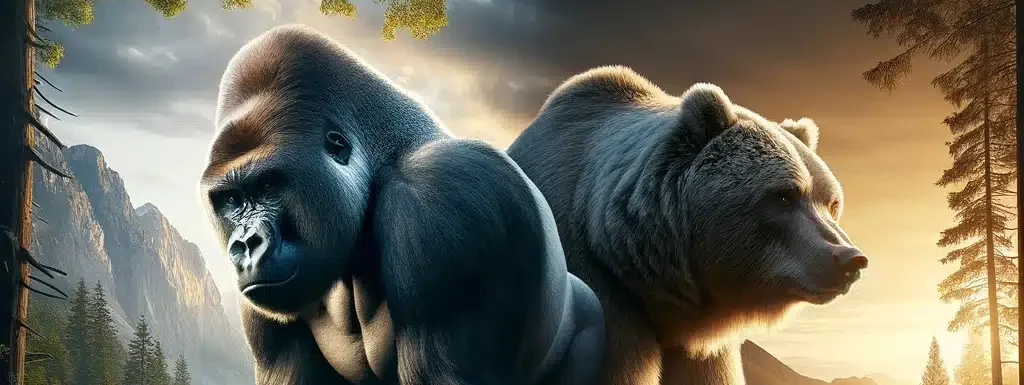
In the lush rainforests of Africa, the silverback gorilla reigns supreme, a gentle giant leading his family group. Meanwhile, in the mountainous regions of North America and Asia, bears roam free – solitary hunters with a taste for adventure (and maybe a bit of honey).
Gorillas and bears are undeniably impressive mammals, but fascinating differences lie beneath the surface. This blog post will help you understand these titans of the wild, exploring their habitat, physical characteristics, dietary preferences, and unique behaviors.
Geographic Giants: Where the Primates and Ursids Roam
Gorillas and bears inhabit vastly different corners of the globe, reflecting their unique evolutionary paths and adaptations.
Gorilla: Kings of the Rainforest Canopy

Gorillas are exclusively found in the tropical rainforests of central Africa. These dense, humid environments provide the perfect habitat for their primarily herbivorous diet. The lush foliage offers a constant source of food, while the thick canopy provides shade and protection from the scorching sun.
There are two subspecies of gorillas: the western gorilla inhabiting the lowland rainforests and the eastern gorilla found in mountain rainforests at higher altitudes.
Bear: Masters of Diverse Habitats
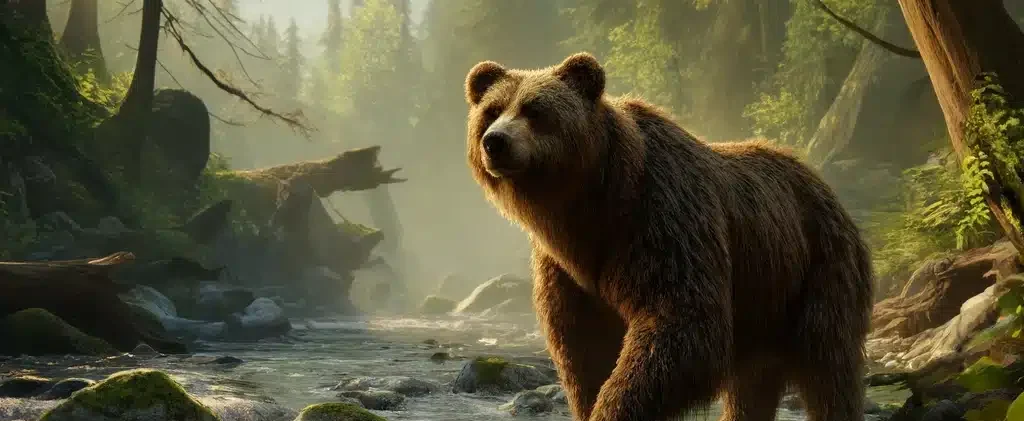
In contrast, bears boast a much wider geographic range. These adaptable creatures thrive in various habitats, from the icy plains of the Arctic to the towering mountains of North America and Asia.
- Polar Bears: These solitary hunters reign supreme on the Arctic sea ice, relying on seals for survival.
- Grizzly Bears: Found in the mountainous regions of North America and Alaska, grizzly bears are opportunistic omnivores that consume a varied diet of plants, fish, and smaller prey.
- Black Bears: These adaptable bears inhabit forests across North America, feeding on fruits, nuts, insects, and occasionally small mammals.
- Giant Pandas: Endemic to China, giant pandas reside in bamboo forests, relying almost entirely on this unique food source.
While bears have a wider range, habitat loss due to human development and encroachment is a major threat to all bear species. Similarly, deforestation and degradation of rainforests endanger gorilla populations. Understanding the specific habitat needs of these creatures is crucial for conservation efforts.
Built for Different Worlds: Gorilla vs Bear
Despite their shared title of “powerful mammal,” gorillas and bears showcase remarkable differences in their physical attributes, reflecting the contrasting environments they call home.
Gorilla: The Gentle Giant’s Anatomy
Gorillas are the largest primates on Earth, boasting impressive size and strength. Their most striking feature is their massive upper body, with powerful arms that can be several times longer than their legs.
This allows them to navigate the dense rainforest canopy by swinging from branch to branch, a locomotion style known as knuckle-walking.

Gorillas have thick fur, well-suited for the humid rainforest environment, and silverback males are easily identified by the distinctive silver hair on their backs.
Bear: Variations on a Powerful Theme
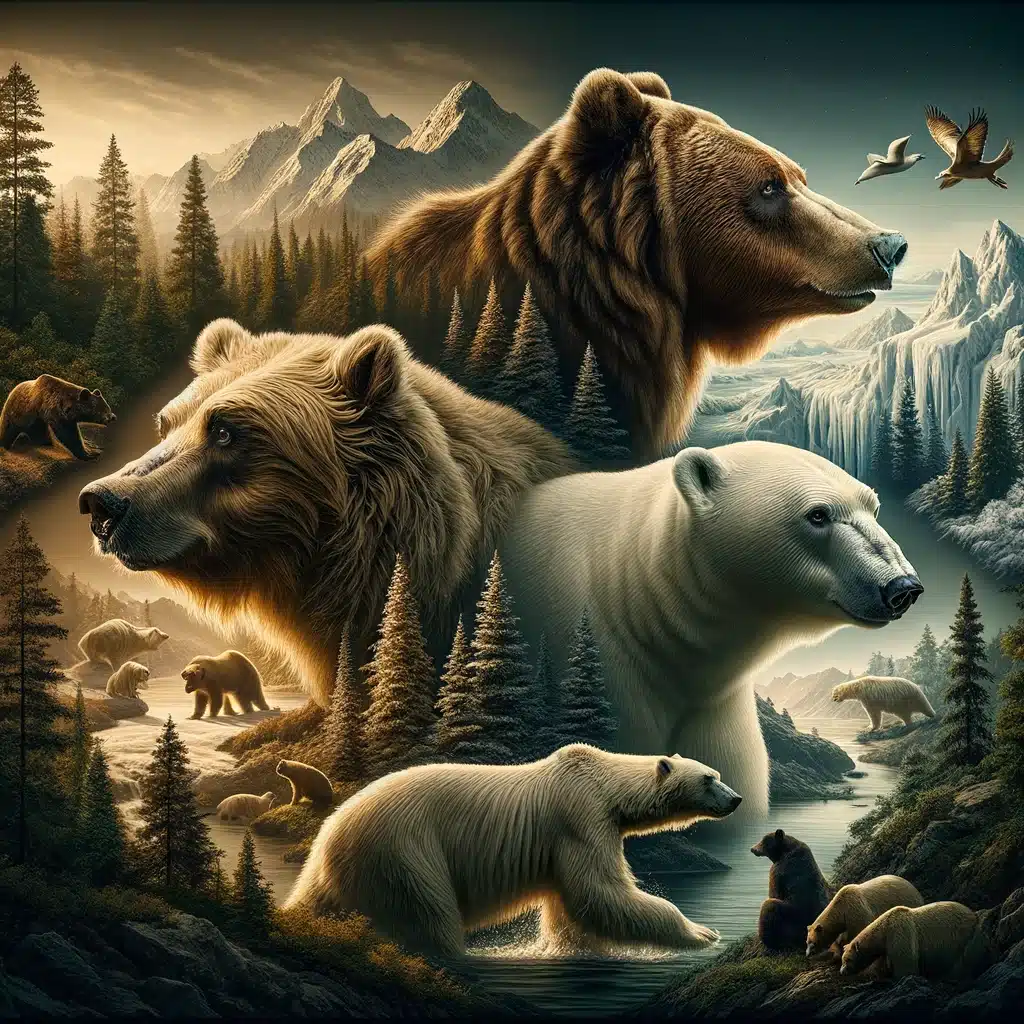
Bears come in various shapes and sizes, each species exhibiting adaptations for their specific habitat and food sources.
Polar Bears
These arctic giants are the largest land predators on Earth. They possess a thick layer of fat for insulation and webbed paws for swimming efficiently in icy water. While appearing white, their fur is translucent, allowing sunlight to reach their black skin and help them retain heat.
Grizzly Bears
Grizzly bears are robust animals with powerful legs and claws, ideal for digging for roots and tubers. Their keen sense of smell helps them locate food sources hidden underground. While smaller than polar bears, they are still formidable predators with sharp claws and teeth.
Black Bears
These smaller bears are more agile climbers than their larger cousins. Their black fur provides camouflage in dense forests, and their retractable claws allow them to climb trees for fruits and nuts.
Giant Pandas
These bears have evolved unique adaptations for their specialized diet of bamboo. Their “pseudo-thumbs,” formed by an enlarged wrist bone, allow them to grasp bamboo stalks effectively. Their flat molars help them grind down the tough bamboo fibers.
The differences in dentition are particularly noteworthy. Gorillas have flat molars and premolars suited for crushing leaves and tough vegetation, reflecting their herbivorous diet. Bears, conversely, have a mix of molars and canines, allowing them to tear flesh and crush plant material, indicative of their omnivorous nature.
Despite their variations, both gorillas and bears share a powerful build and impressive strength, allowing them to thrive in their respective environments. In the next section, we’ll explore the fascinating world of their dietary choices.
Dietary Delights: Plant Power vs. Omnivorous Choices
While gorillas and bears are formidable giants, they take vastly different approaches to fueling their impressive bodies. Let’s explore their distinct dietary preferences.
Gorilla: The Gentle Herbivore
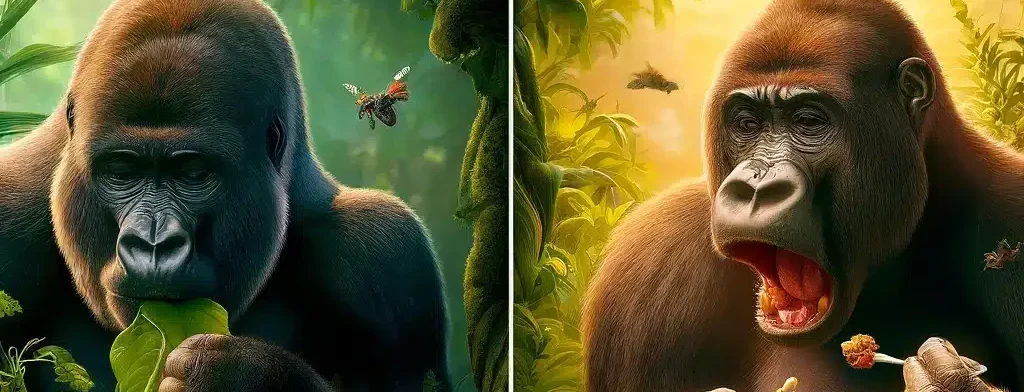
Gorillas are primarily herbivores, relying on a diet rich in leaves, fruits, and stems. They spend a significant portion of their day foraging, utilizing their powerful arms to reach for leaves high in the canopy.
Their flat molars and premolars are perfectly adapted for crushing tough vegetation and extracting nutrients from plant material. Interestingly, gorillas also consume small amounts of insects and soil, potentially to supplement their mineral intake.
Bear: The Omnivore’s Feast
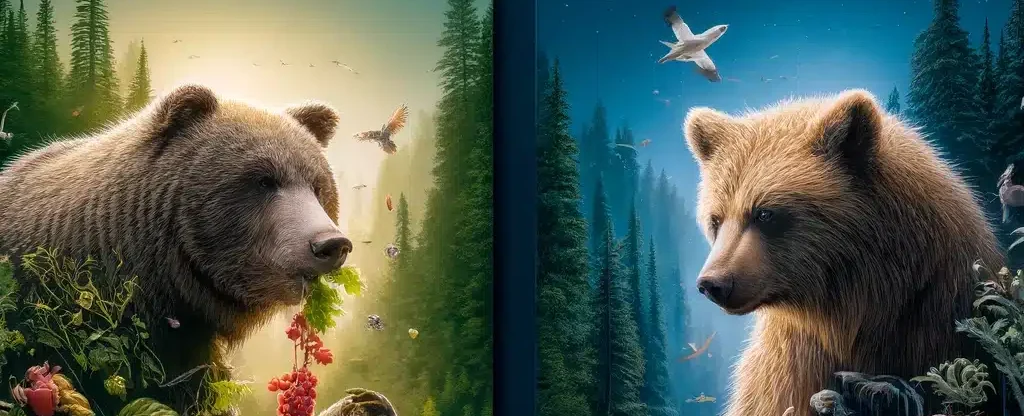
On the other hand, bears are opportunistic omnivores, meaning they consume both plant and animal material. Their diet varies greatly depending on the species and the availability of food sources throughout the seasons.
- Polar Bears: These arctic hunters are apex predators, relying almost entirely on seals for protein and fat. Their powerful jaws and sharp claws allow them to take down these large prey animals.
- Grizzly Bears: Grizzly bears are resourceful eaters who switch between hunting and foraging based on seasonal availability. During the summer months, they feast on berries and graze in meadows. As fall approaches, they become more predatory, hunting for elk, deer, and salmon. They may also scavenge for carrion to supplement their diet.
- Black Bears: Similar to grizzly bears, black bears are omnivorous. They rely heavily on fruits, nuts, and berries but consume insects, grubs, and occasionally small mammals like rodents. Their climbing skills allow them to raid beehives for honey, a favorite sweet treat.
- Giant Pandas: These bears have become highly specialized bamboo eaters. Their unique digestive system allows them to extract nutrients from this tough, fibrous plant. They spend a significant portion of their day consuming bamboo, a testament to their remarkable adaptation to this unique food source.
The dietary differences between gorillas and bears highlight their distinct ecological roles. Gorillas, as herbivores, contribute to seed dispersal and nutrient cycling within the rainforest ecosystem. Bears, as omnivores, help maintain ecological balance by controlling prey populations and scavenging for carrion.
Gentle Giants vs. Fearsome Forces: Behavioral Differences
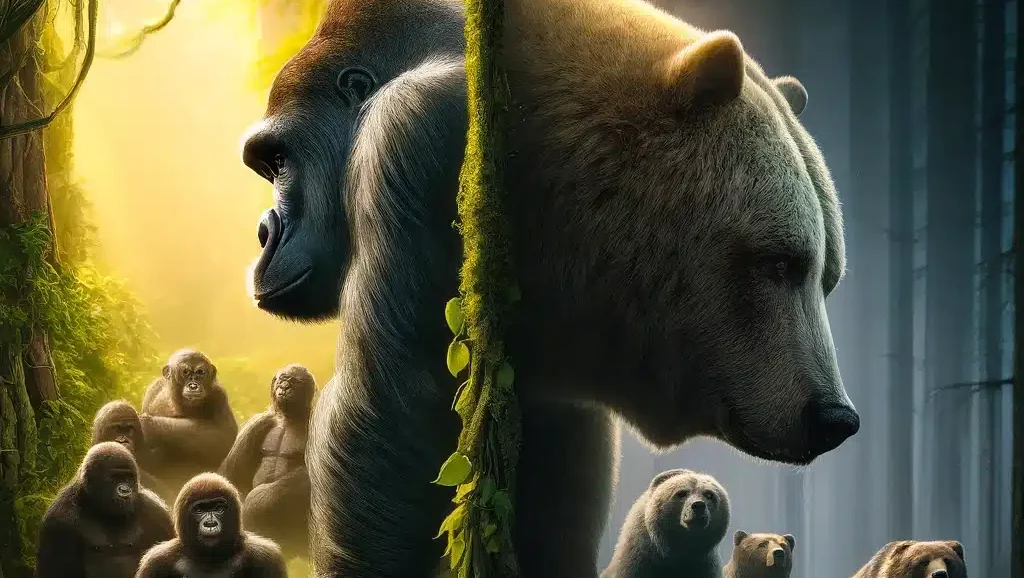
Gorilla: Life in Family Groups
Gorillas are highly social creatures. They live in family groups led by a dominant silverback male. These groups typically consist of several females and their offspring.
Silverbacks protect the group, resolve conflicts, and lead them to feeding grounds. Communication within the group occurs through various vocalizations, including roars, barks, and grunts.
Bear: A Life of Solitude (Except for Moms)
Most bear species are solitary creatures that come together only to mate. Mothers raise their cubs for up to two years, teaching them essential survival skills like hunting and foraging.
Once cubs reach independence, they venture out independently, establishing their territories. Hibernation is a key adaptation for some bear species, allowing them to conserve energy during harsh winters when food is scarce.
Parenting Styles: A Tale of Two Worlds
While both gorillas and bears raise their young, their parenting styles differ significantly. Gorilla mothers provide extensive care for their offspring for several years, nurturing and teaching them essential social skills.
Bear cubs, on the other hand, become independent much sooner. They rely on their mothers for basic survival skills before venturing out on their own.
Coexistence and Conservation: Sharing the Planet
Despite their differences, gorillas and bears are essential to their respective ecosystems. However, both species face significant habitat loss, poaching, and climate change threats.
The Call to Action
Conservation efforts are crucial to ensuring the continued survival of these magnificent creatures. Supporting organizations that protect gorilla habitats and promote sustainable forestry practices is essential for gorillas.
For bears, protecting wilderness areas, mitigating human-wildlife conflict, and addressing climate change are critical steps in ensuring their future.


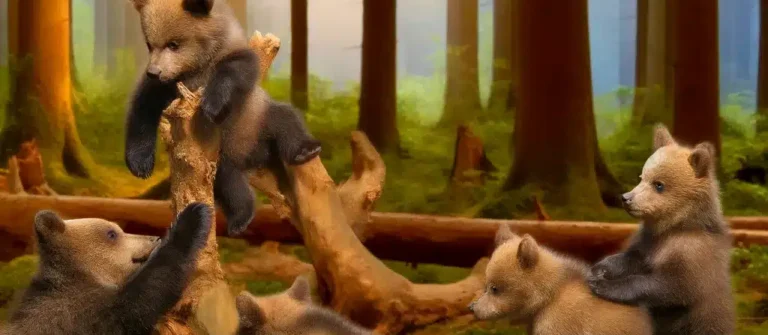


Terrific post however I was wanting to know if you could write a litte more on this subject? I’d be very grateful if you could elaborate a little bit further. Thank you!